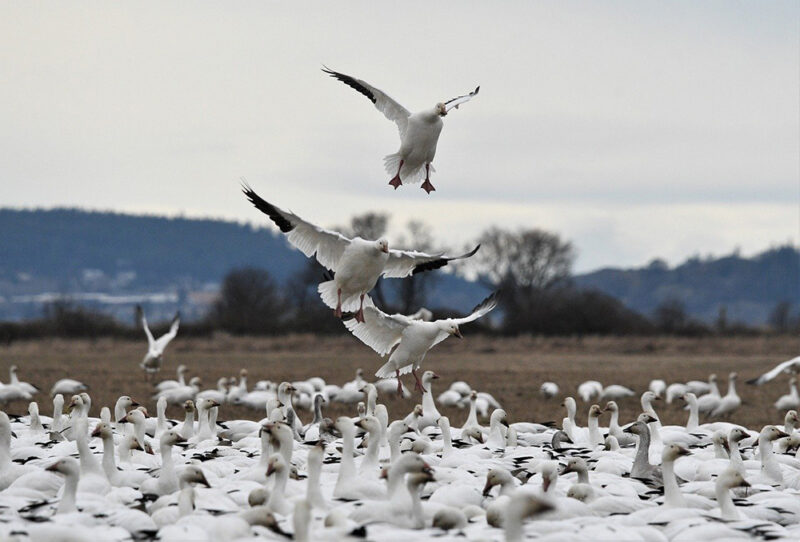
I was laying in the Arkansas mud on a conservation goose hunt in February watching birds at a distance when I had a few realizations. First, it’s cold laying in the mud, I don’t care how many clothes you wear. Second, the biologists are probably right about there being too many snow geese. Third, hunting with zero limits on shells, calls and birds is a whole lot of fun.
OK, I’ve read the stories and even watched videos, but until seeing a snow goose tornado in person, I didn’t get it. While it was probably just in the high hundreds, when these birds came down, it seemed like thousands or more. And these birds can be a mile above the ground showing no interest when just a few decide to drop and bring the whole flock barreling into gun range. In fact, this happened several times throughout the hunt, providing massive opportunities to put steel into the air and birds on the ground.
Of course, hitting these birds is harder than most realize. Despite there being birds everywhere in the sky, you can’t just blast steel and hope for the best. These birds are tough, requiring at least a 12-gauge shotgun, larger non-toxic shot, such as BB, and careful aim. But any way one looks at it, the Light Goose Conservation Order spring season provides lots of opportunities for hunters to have fun, store some meat and help the long-term health of light geese and their habitat.
Reason for the Hunt
According to Dr. Michael Brasher, Senior Waterfowl Scientist for Ducks Unlimited, throughout the 80s and 90s, snow geese and other light geese populations started increasing dramatically in the Mississippi and Central flyways. So much so that biologists started getting worried about nesting habitat damage.
“There was evidence that Ross and lesser snow geese were overwhelming their nesting habitats,” Dr. Brasher said. “Too many birds had the potential to damage the artic ecosystems on which so many other species also depended.”
Scientists estimated light geese populations had increased to between 3 million and 5 million birds, though some believe that estimate was low, and would continue to increase by at least five percent annually. Biologists did, in fact, find damage in certain areas of the artic and sub-artic due to increased populations of snow geese.
Because of all this, a group of government and non-government biologists came together to study light geese and determine ways to reduce populations, believing this was a necessary step for limiting harm to other species that used the same habitats. This group determined that hunting likely was the most effective way to reduce snow goose populations at large scales.
This led to the federally authorized Light Goose Conservation Order, which opened a late winter/early spring conservation hunting season for light geese in the Central, Mississippi and Atlantic flyways. This special season allowed hunters to use unplugged shotguns and electronic calls, both of which were illegal during the regular season. It also eliminated bag limits, meaning hunters could take as many snow geese as desired. The plan was for hunters to reduce populations by half in 10 years.
It’s been 25 years since the federal government instituted the LGCO. During that time, hunters have taken millions of Ross’ and light snow geese during this special season, with harvest estimates around 500,000 annually. Every year, hunters used the LGCO to put a whole lot of meat on the ground, all while having a ton of fun. The LGCO is after deer season and before turkey season, so it is a time of year when hunters don’t have many outdoor options.
Snow Goose Hunting Tactics
Considering the number of birds available, one would think putting snow geese on the ground would be easy; it’s not. Snow goose hunting is a blast, figuratively and literally, but it’s not easy. When there are thousands of birds, there are twice that many eyes. And these birds survive by being wary and suspicious of pretty much everything. Then, these birds are shot at all the way south and are going back through the war zone on their way back north. Snow geese get shot at for most of the year, so they stay in a constant state of condition orange.
This, of course, is why pursuing snow geese requires extensive scouting and a plan. Hunters have to set up in areas where birds feed and congregate as they slowly head north toward breeding zones. It also requires quite a lot of gear, including guns, shells, weather-proof clothing and lots of decoys; large flocks of snow geese only come down to large flocks of decoys. And weather doesn’t really matter. Snow geese fly in almost any weather, including when rain, snow and sleet is falling; bad weather often provides good hunting. And food is a requirement all year round.
After locating birds, typically in feeding areas, hunters have to set up with fairly large spreads of decoys, when the birds aren’t there. While some hunters have started using fewer decoys, comparably, it still takes quite a few to bring birds to the gun. A combination of full body blue/snow goose decoys with 300 to 500 wind-sock decoys will work. However, more decoys can’t hurt. Some hunters still use 1,000 or more decoys in a spread.
Set the decoys in a V pattern with the blind or hide at the opening to create the shooting zone. Make sure to use the wind as an advantage, remembering geese like to land into the wind. Set The full body decoys close to the interior of the V, with a few spread out among the wind socks. If using motion decoys, put them right in front or right behind your hiding spot, depending on the wind. This helps put the birds right in front of the guns.
Staying unseen until ready to shoot requires some thought. Hunters can use a variety of blinds in which to hide, from pits to layouts and even hay bales. However, one of the easiest methods involves covering camouflage with a white raincoat and laying on the ground with a short seat under the head and back. These allow quick pop ups and relocations. This is the method used during the hunt mentioned earlier.

Finally, hunters need to think about shotguns and shooting zones. While some might still use big 10 gauges, most hunters prefer 12-shotguns with 3-inch chambers using BB or BBB loads. Of course, during the LGCO season hunters can forego plugs and even add magazine extensions to increase payloads.
This doesn’t mean, though, that hunters can simply point a gun into the mass, pull the trigger and bring down lots of birds. Aiming at specific birds still matters. In fact, smart hunters start by singling out geese on the outer edge of range and work inward toward closer birds. Aiming at far birds first provides more targets for a longer period, rather than shooting at the closer birds. Regardless, hunters need to use proper shotgun techniques and target individual birds. Sure, there may be lots of birds in the sky, but randomly throwing steel into the air won’t bring them down.
Reality of the Light Goose Conservation Order
Despite 25 years of dodging guns both coming and going, snow geese populations remain abundant but down from historic highs. Whether the LGCO has been successful remains a topic of discussion.
On one hand, survival rates of adult light geese have been virtually unchanged over the past 25 years; adult survival was identified as the key vital rate for controlling population growth. On the other hand, recent evidence indicates that at least some populations of Mid-continent lesser snow and Ross’ geese have declined dramatically in recent years. It’s believed largely, though, due to multiple successive years of poor production.
For the order to be enacted, scientists studied mature breeding pair survival rates. Basically, how many birds are making more birds. Most of the evidence shows that light geese populations are increasing, which makes some doubt the effectiveness of the LGCO. Of course, some might say that populations would be much higher without the order. According to Dr. Brasher, the LGCO has had very light impact on survival rates.
There is also some evidence that damage to artic habitat wasn’t as widespread as first believed. There is even some evidence that snow goose populations are currently dropping.
“While some of the areas initially studied remain impaired by the effects of snow geese, we have discovered that the damage was more isolated than originally thought,” said Dr. Brasher said. “The birds seemed to spread out to new areas as the population grew, so habitat damage was mitigated somewhat.”
The status and trajectory of light goose populations is more intriguing now than perhaps ever before. While some breeding colonies in the Mid-continent arctic are rapidly declining, others are stable or growing. Breeding populations in the eastern arctic have stabilized in recent years, but those in the Pacific flyway, notably Wrangel Island, Russia, are now approaching exponential growth rates. The Pacific flyway, however, is not part of the LGCO, so hunters in that area do not have a more open conservation season available. Some believe the LGCO should be expanded to include the Pacific flyway.
The LGCO probably isn’t going anywhere any time soon, even though its effects on light goose populations remain uncertain. This is likely because the hunt can be successful at taking out birds that would go on the breed if not harvested, and most biologists agree that it would only takes a few successive years of good or excellent production to crank out millions of young geese and push the population back to superabundant levels. In any case, hunters still have an opportunity to pursue waterfowl during a down time of the year.
Snow Goose Hunting Guns & Gear
Waterfowl hunting has always been a gear-laden activity, and pursuing snow geese is no different. However, there is some gear that is specifically designed for hunting snow geese. This includes decoys, types of calls and shotguns. Sure, some gear can translate over, but those who really pursue snow geese typically need some fairly specific gear. And it can be a pain to change things over for the regular season and back again later. So, quite a few hunters purchase a shotgun specifically designed for snow goose hunting.
FOXPRO Snow Pro

While there are a few electronic snow goose callers, the most popular is the FOXPRO Snow Pro. This fairly light caller at 5 pounds comes with a controller and two speakers, though up to four additional speakers can be added. It also comes preloaded with 75 sounds, including 37 snow goose, 29 predator and nine crow. However, it can hold up to 300 sounds via USB. It’s powered by a lithium battery pack (battery and charger included), and an external battery can be added. Hunters have long been using the Snow Pro for success during the Light Goose Conservation Order season.
Haydel’s Snow Goose Call
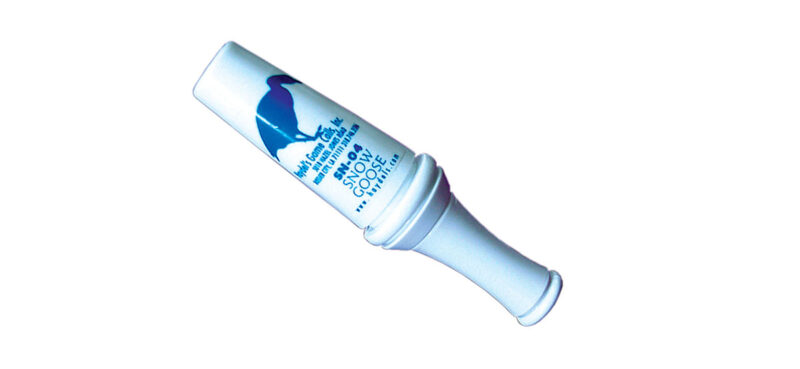
Most snow goose hunters used electronic calls, but there are times when a regular call can be quite useful. For this, Haydel’s Game Calls produces a short-reed snow goose call. With this easy-to-blow call, hunters can produce all the sounds of snow geese. It just takes practice, just like every other game call.
GForce One 12 Inertia Hunting Shotgun

Choosing a snow goose shotgun is pretty personal, requiring decisions on gauge, action and even price. In fact, price factors hard into this decision, as shotguns aren’t cheap and semi-autos usually cost even more. That is the secret benefit of the GForce One. This inertia-driven, semi-auto shotgun costs significantly less than many others, especially considering its features.
To start, like all inertia guns, the GForce One handles everything from light field loads to heavy steel for geese. It also comes with an oversized charging handle, cross-bolt safety and bolt-release button. Its 28-inch barrel comes with a burnt-bronze finish and a HiViz fiber-optic front sight. It also comes with Benelli Crio chokes and five extended chokes (Cylinder, Improved Cylinder, Modified, Improved Modified and Full). The gun’s standard capacity is three plus one, but it comes with an extension that increases the capacity to 11. This shotgun is not considered light, but it does come with a Limited Lifetime Warranty, where if there are any problems, the company will fix it for free or replace it if it can’t be fixed.
Mossberg 940 Snow Goose

One that won’t work for the regular season but flourishes on the snow goose field is the Mossberg 940 Snow Goose. This extremely long semi-auto, at almost 51 inches, the 940 Snow Goose provides shooters with up to 13 rounds of steel using 2 ¾-inch shells, shooters lose one shell when using 3-inch loads. Other features include an adjustable length of pull and comb drop, corrosion-resistant internal parts, multiple choke tubes and a HIVIZ CompSight fiber-optic sight. However, Mossberg has updated the 940 with a patent-pending receiver cut that accepts direct mounting of Shield RMSc-pattern micro dot sights. This makes the 940 Snow Goose optics ready for those whose eyes need a little bit of help getting on target.
Stoeger M3500 Snow Goose Edition

Another shotgun that offers more rounds than standard is the Stoeger M3500 Snow Goose Edition. This shotgun contains a whole lot of features that work well when pursuing snow geese. This includes an 11-round capacity with 2 ¾-inch shells. For this shotgun, Stoeger starts with the ultra-reliable inertia system that runs much cleaner during high round count hunts. It also hides well during late winter with its distressed white cerakote finish that protects the gun from the harsh conditions typical for this time of year. In addition, the M3500 comes with oversize controls, five extended chokes, a shim kit for adjusting drop and cast and a red-bar front sight.
By Paul Rackley, GunBroker.com Editor

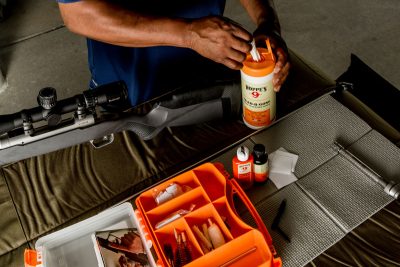

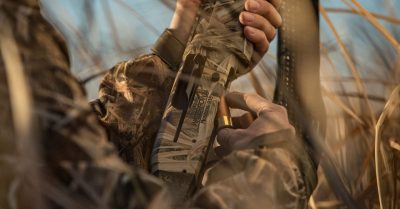


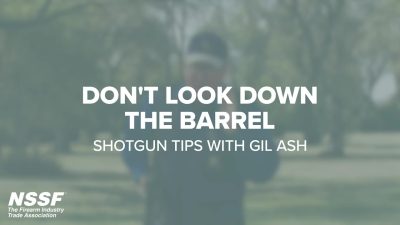
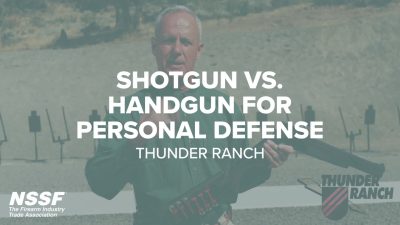
![All the Beretta Shotguns Released in 2023! [Video]](https://content.gunbroker.com/wp-content/uploads/2023/04/Beretta-2-1200-X-800-400x267.jpg)

